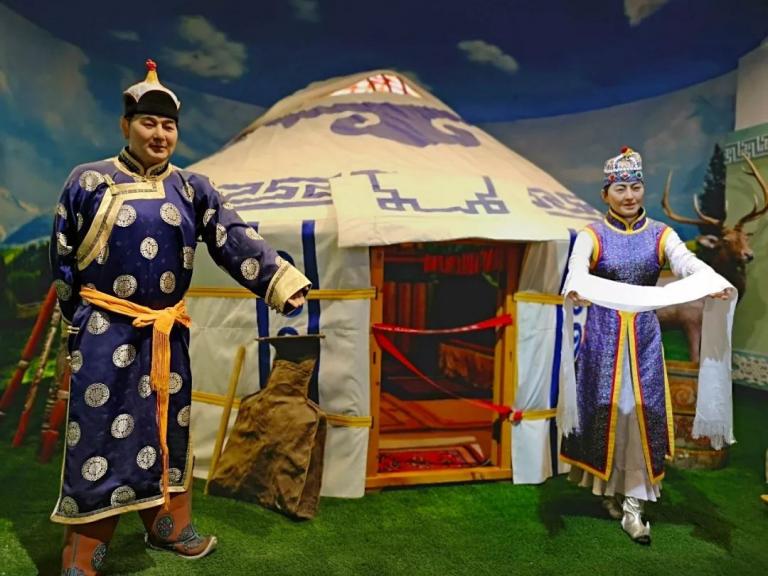Tagligan Festival
4 min readTagilgan Festival, which is also called Aobao Festival and held between May and July of the lunar calendar, is a festival for people of Mongolian ethnic group to offer sacrifice to the heaven and the earth as well as the sun and the moon, and to nature. At the time, people erect temporary yurts and the nomads bring their children with them, picking up stones to heap on the yurtwith branches of the herba euphorbiae mili or the willow on the branches tie pieces of red, white and yellow cloth Everyone who takes part in the sacrifice to Aobao should put stones on it. After Aobao is heaped up, a figure of the Buddha as well as tributes such as mutton, food with milk and deep-fried cakes are put before it. Then people will burn joss sticks and candles while chanting scriptures round Aobao led by Living Buddha and lofty Lama. After walking round it for 3 laps, everyone should kneel and kowtow to Aobao, so as to pray God for blessings for human beings and hope that god may bestow tranquility and peace on them that the wind and rain come in their time and that their livestock grow stout and strong with the number of which increasing year on year After the ceremony, people will conduct folk entertainment such as horse racing, wrestling and archery, and slaughter sheep and boil the mutton for the grand banquet. People cheerfully gather together while singing and dancing which is marvelous with a ceremonious and enthusiastic atmosphere.

A legend says, long time ago, there was a mule palanquin stopping before a village where a number of herdsmen lived. a woman took off the palanquin and sat on the ground, crying and shouting loud with tears, which immediately ed to a mighty storm the whole village did not know why the weather changed so dramatically and all fell into panics. After that, however, the yoman abruptly disappeared. In winter, when people fetched water from a drilled icy hole, they saw the face of a disheveled woman on the surface of the water which was located at the entrance of the cave; everyone was dead scared dropped the buckets in their hands and ran back to the village covered with confusion. At the time it began to snow big flat flakes which made all villagers panicky. Therefore, people invited 9 lamas to chant scriptures and incantations to finally seize the wicked spirit by their supernatural power To prevent her from continuing to haunt the village, people put her head under the heap of stones and earth with everyone who passed by adding a stone on the pile to add to the weight. After the accumulation over a long period of time, a stone heap or earth heap gradually formed, which was called”Aobao”. People werestill afraid that the wicked fairy might stir up trouble and endanger the villagers and livestock, so they regularly conducted sacrifice ceremonies andnvited the lama to chant scriptures so as to pray for a tranquil and peaceful life with prosperous livestock.

In modern times along with the enhancement of the scientific and cultural level of Mongolian people, the nature and form of Tagilgan Festival has hanged to some extent. people celebrate the festival mainly because of th green grass carpeting the ground as well as the stout and strong livestock and that people have finished the busily delivering of the lambs by this chancethey can meet relatives and friends, exchange a few commonplaces and extend congratulations to one another; the young climb mountains and play beside the water, or do trading activities such as exchanging materials. Because of the fadeout of the religious color of Tagilgan Festival and the increase in the number of entertaining activities, Tagilgan Festival now is called the”Nadam Fair”. the word “nadam”means “entertainment”or game”. in july and august every year nowadays, in the golden season that flowers blossom in a riot of color and sheep and cattle are stout and strong the Nadam Fair which usuallysts 3 days to a week will be held beside the picturesque Sayram Lake, on the grasslands of Bayanbulak and Hoboksar and in still other places. Tens of thousands of people will take part in a grand Nadam Fair. At the time, farmerand herdsmen who are dressed up in colorful clothing with their families will ride carts or horses coming from every direction to the grassland for the ceremonious fair and enjoy the cheerfulness of the festival to their heartscontent. Then there fly colorful flags on the grassland which is usually in tranquility but now is filled with cheerful people and roaring horseseverywhere is bustling with noise and excitement with a rich festival atmosphere.









